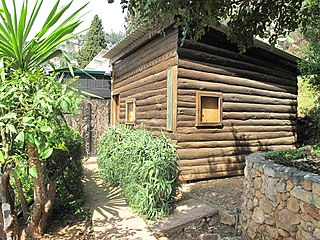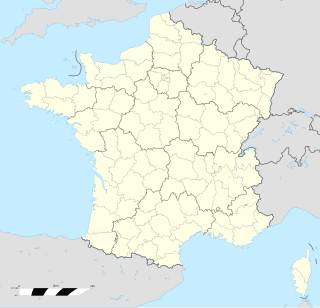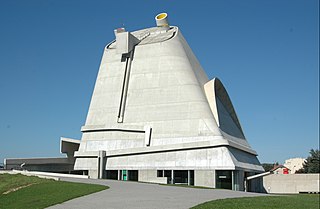 W
WThe Cabanon de vacances is a vacation home designed and built by noted architect Le Corbusier in 1951. It is the only place the architect Le Corbusier built for himself which he used for vacation. In July 2016, the home and several other works by Le Corbusier were inscribed as the world's smallest UNESCO World Heritage Sites.
 W
WLa Cité de Refuge is a building in Paris, France designed by the architect Le Corbusier. Since its opening in 1933, it has been occupied by the French Salvation Army. The building, one of Le Corbusier's first urban housing projects, was designated a National Historical Monument of France in 1975.
 W
WThe Firminy-Vert Stadium is a sport field located at Firminy in the Loire in France.
 W
WLouise-Catherine is a former coal barge that was converted by the architect Le Corbusier into a floating homeless shelter, moored in Paris. It is a registered historic monument of the city of Paris. After being unused for years, it was under renovation as a cultural centre when it sank in the aftermath of the flooding of the Seine in early 2018.
 W
WMaison du Brésil is a building in the Cité Universitaire complex in Paris, France, designed by noted architects Le Corbusier and Lúcio Costa for Brazilian students and scientists. It was built in 1957 and refurbished in 2000.
 W
WMaisons Jaoul are a celebrated pair of houses in the upmarket Paris suburb of Neuilly-sur-Seine, designed by Le Corbusier and built in 1954–56. They are among his most important post-war buildings and feature a rugged aesthetic of unpainted cast concrete "béton brut" and roughly detailed brickwork.
 W
WNotre-Dame du Haut is a Roman Catholic chapel in Ronchamp, France. Built in 1955, it is one of the finest examples of the architecture of Franco-Swiss architect Le Corbusier. The chapel is a working religious building and is under the guardianship of the private foundation Association de l’Œuvre de Notre-Dame du Haut. It attracts 80,000 visitors each year.
 W
WThe Fondation Suisse or Pavillon Le Corbusier is a building designed by Le Corbusier between 1930–31 and is located at the Cité Internationale Universitaire, in Paris.
 W
WPlan Voisin was a planned redevelopment of central Paris designed by French Swiss architect Le Corbusier in 1925. It was sponsored by his friend, the avante garde aircraft and automobile builder Gabriel Voisin, whose cutting-edge design aesthetic Le Corbusier admired. The project is one of Le Corbusier's most well known.
 W
WThe Cité Frugès de Pessac is a housing development located in Pessac, a suburb of Bordeaux, France. It was designed by noted architect Le Corbusier as both an architect and a town planner. It contained some 70 housing units.
 W
WSaint-Pierre is a concrete building in the commune of Firminy, France. The last major work of Le Corbusier, it was started in 1973 and completed in 2006, forty-one years after his death.
 W
WSainte Marie de La Tourette is a Dominican Order priory, located on a hillside near Lyon, France designed by the architect Le Corbusier, the architect’s final and most important building. The design of the building begun in May 1953 and completed in 1961. The committee that decided the creation of the building considered that the primary duty of the monastery should be the spiritual awakening of the people and in particular the inhabitants of nearby areas. As a result, the monastery was constructed in Eveux-sur-Arbresle, which is just 25 km from Lyon and is accessible by train or car.
 W
WThe Unité d'habitation of Nantes-Rezé is an apartment building located in Rezé, a suburb of Nantes, France designed by Le Corbusier. It contains 294 units, and was completed in 1955. It is part of the housing concept of Unité d'habitation. The building contains a school at the top level, but unlike the Unité d'habitation of Marseille, it does not contain a retail level. It is listed as a monument historique since 2001.
 W
WVilla La Roche, also Maison La Roche, is a house in Paris, designed by Le Corbusier and his cousin Pierre Jeanneret in 1923–1925. It was designed for Raoul La Roche, a Swiss banker from Basel and collector of avant-garde art. Villa La Roche now houses the Fondation Le Corbusier.
 W
WVilla Savoye is a modernist villa in Poissy, on the outskirts of Paris, France. It was designed by the Swiss architects Le Corbusier and his cousin, Pierre Jeanneret and built between 1928 and 1931 using reinforced concrete.
 W
W W
W W
W W
W W
W W
W W
W